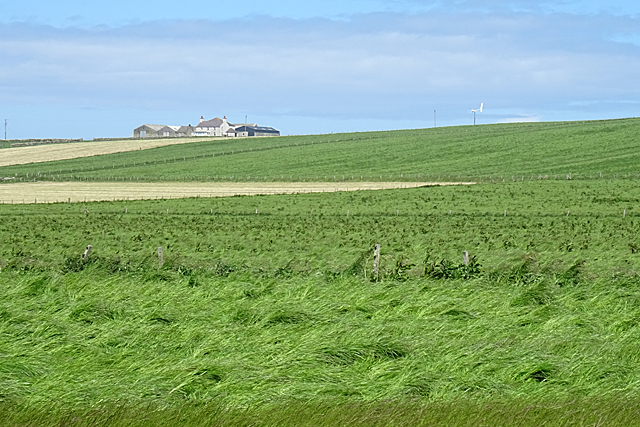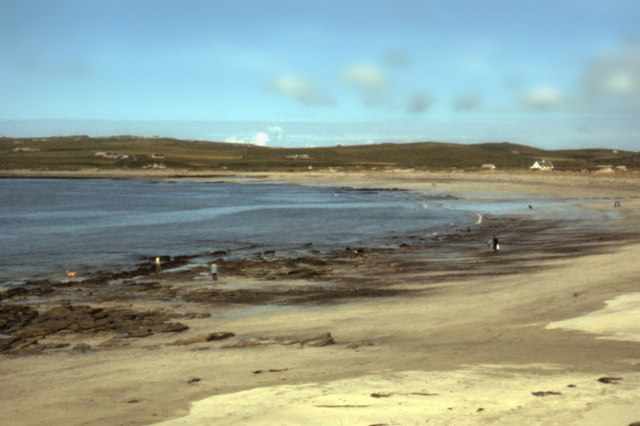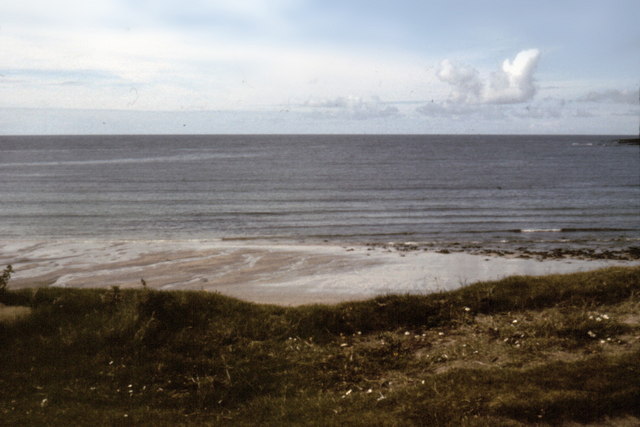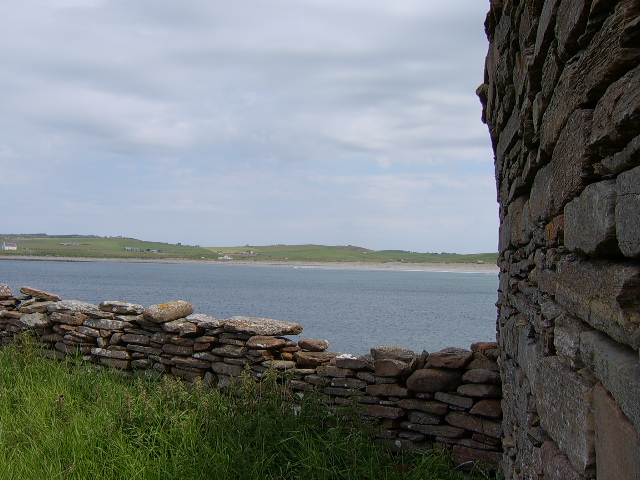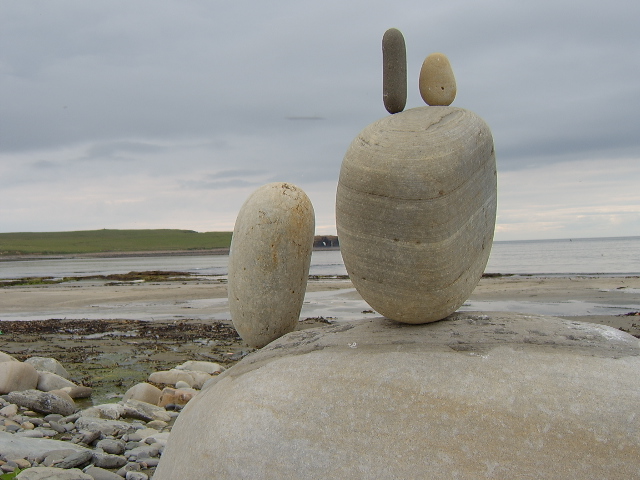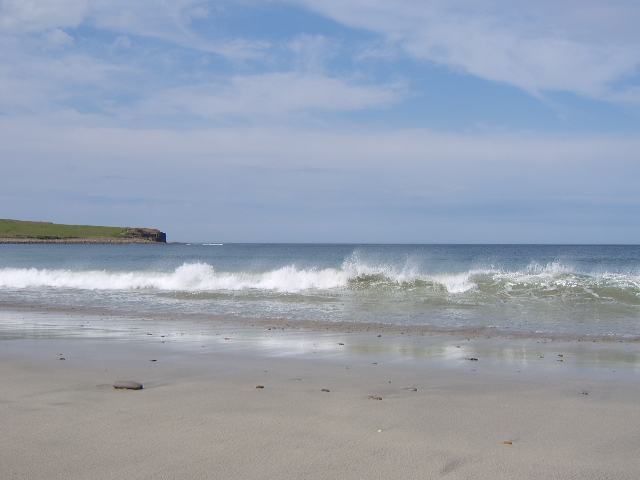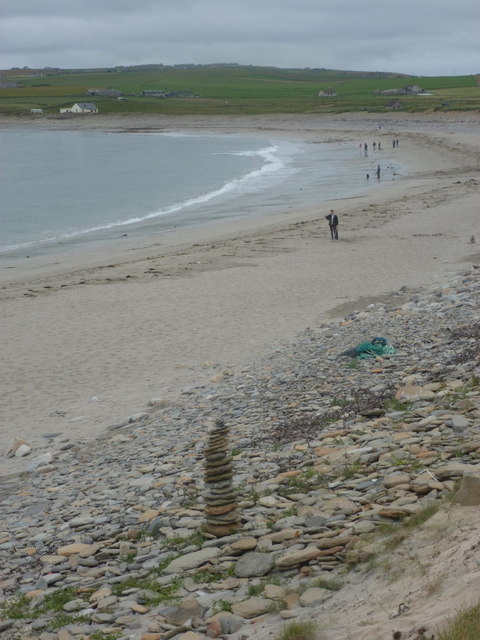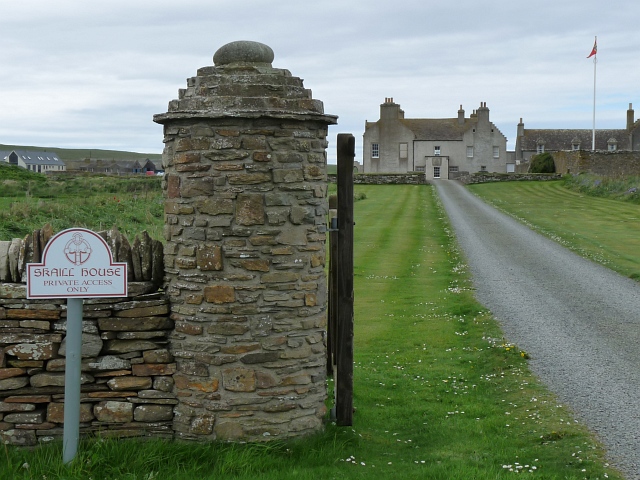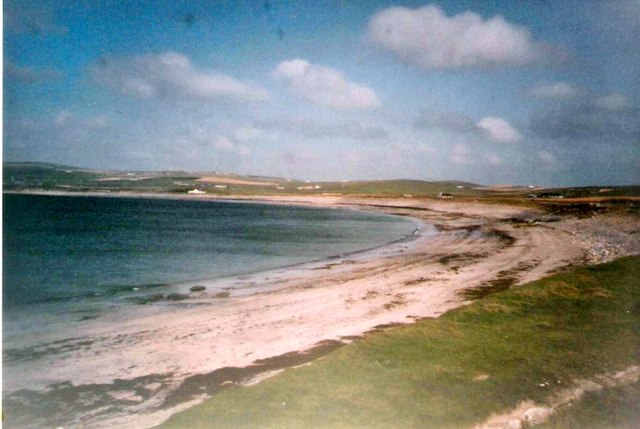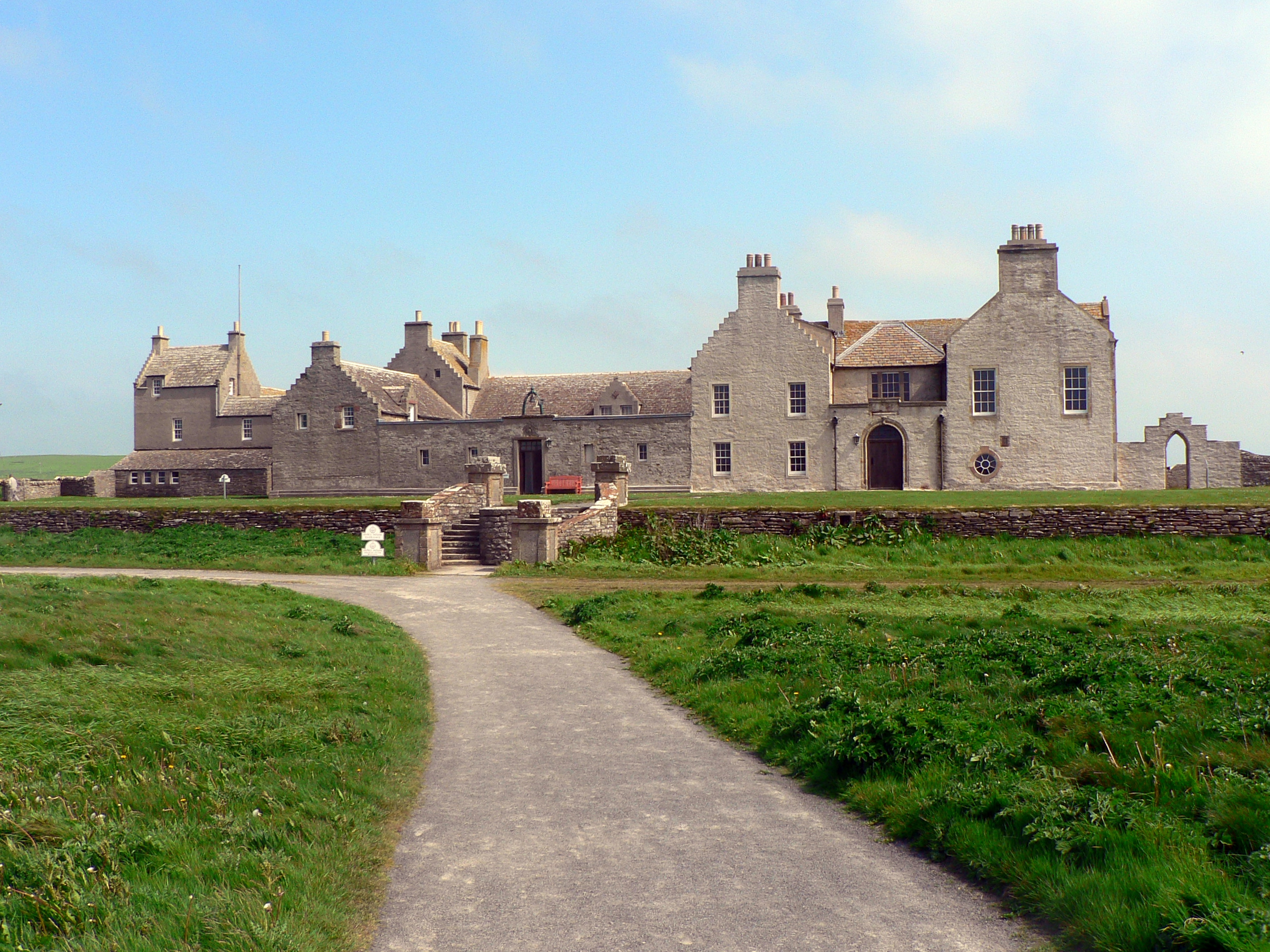Hole o' Row
Coastal Feature, Headland, Point in Orkney
Scotland
Hole o' Row
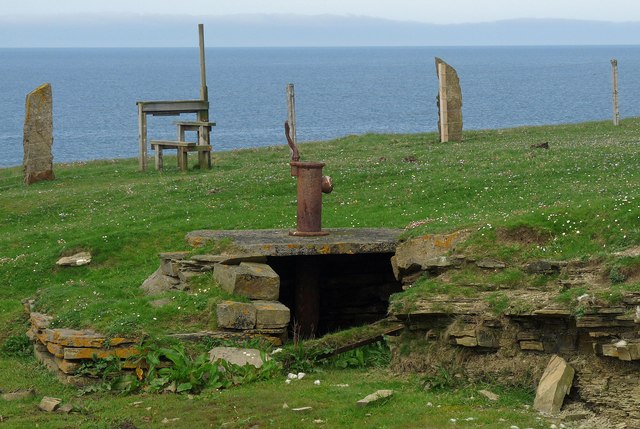
Hole o' Row is a prominent coastal feature located in Orkney, an archipelago in northern Scotland. Situated on the western coast of Mainland Orkney, this headland juts out into the Atlantic Ocean, offering breathtaking views of the surrounding seascape.
The name "Hole o' Row" is derived from the Old Norse term "hólar," meaning a depression or hollow, and "rá," which refers to a rough sea. This name aptly characterizes the coastal feature, as it is known for its rugged and rocky terrain.
The headland is composed of towering cliffs that rise dramatically from the sea, creating a striking natural spectacle. These cliffs are carved with intricate patterns formed by years of erosion from the relentless waves. Visitors to Hole o' Row can witness this powerful process in action, as the waves crash against the cliffs, sending sprays of seawater into the air.
The area surrounding Hole o' Row is teeming with diverse marine life, making it a popular spot for birdwatching and wildlife enthusiasts. Here, visitors can catch glimpses of various seabirds, such as puffins, guillemots, and fulmars, nesting on the cliffs or gliding through the air.
In addition to its natural beauty, Hole o' Row holds historical significance. The headland is believed to have served as a lookout point during ancient times, providing a strategic vantage for monitoring the surrounding waters for potential threats.
Overall, Hole o' Row is a captivating coastal feature that showcases the raw power of the ocean and offers a glimpse into the rich natural and historical heritage of Orkney.
If you have any feedback on the listing, please let us know in the comments section below.
Hole o' Row Images
Images are sourced within 2km of 59.05067/-3.3521307 or Grid Reference HY2218. Thanks to Geograph Open Source API. All images are credited.
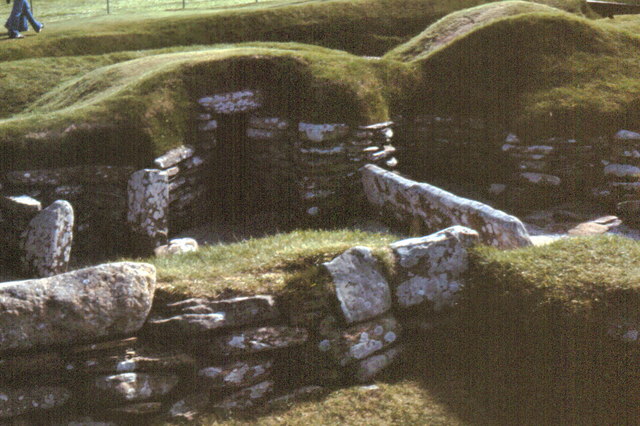
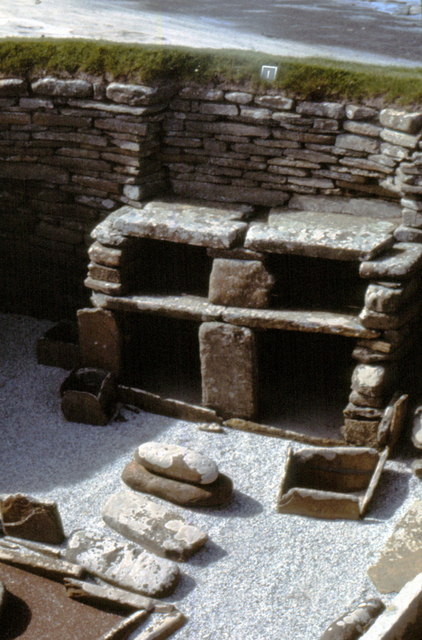
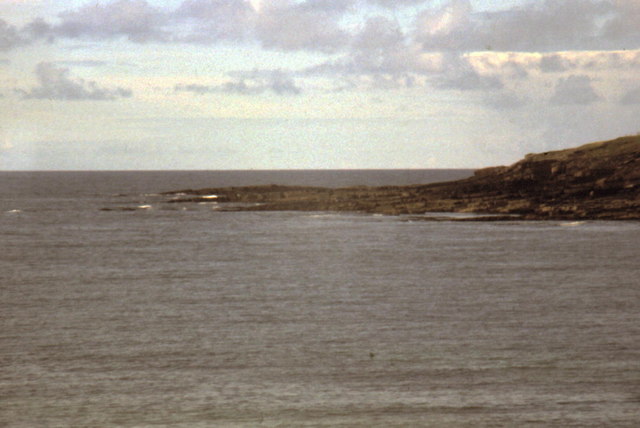
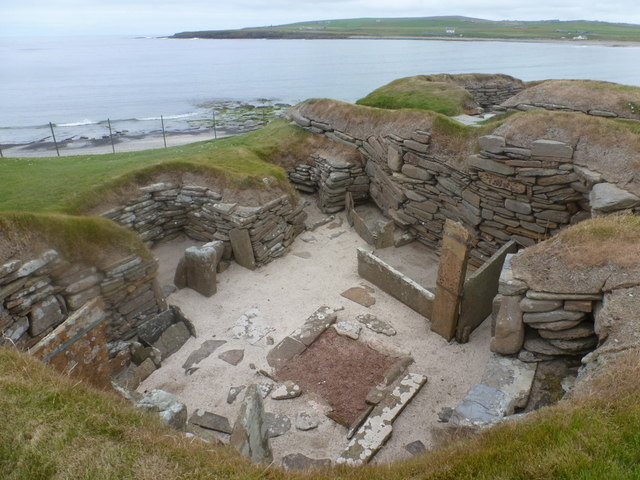
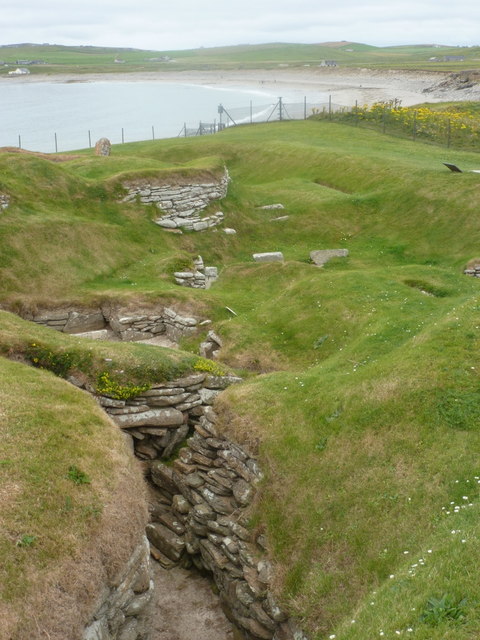
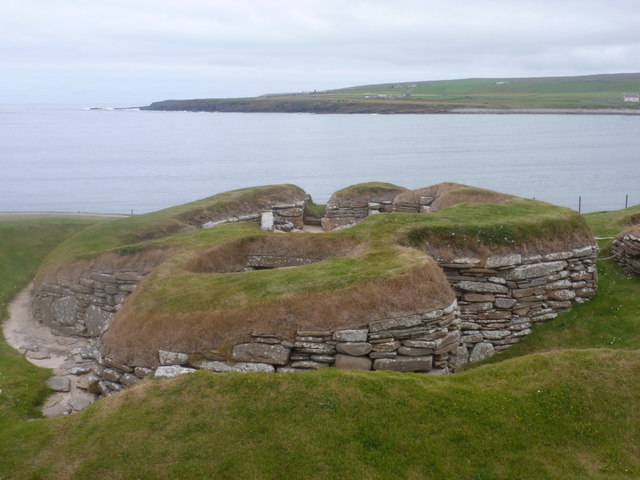
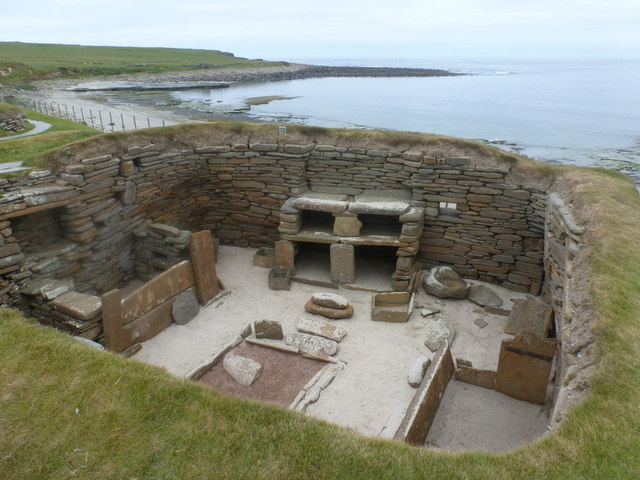
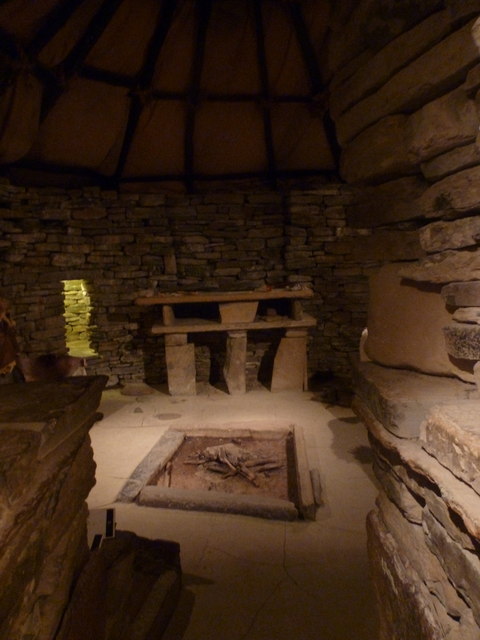
Hole o' Row is located at Grid Ref: HY2218 (Lat: 59.05067, Lng: -3.3521307)
Unitary Authority: Orkney Islands
Police Authority: Highlands and Islands
What 3 Words
///loosed.samples.dwarf. Near Sandwick, Orkney Islands
Nearby Locations
Related Wikis
Skara Brae
Skara Brae is a stone-built Neolithic settlement, located on the Bay of Skaill on the west coast of Mainland, the largest island in the Orkney archipelago...
Bay of Skaill
The Bay of Skaill (from Old Norse Bugr Skála) is a small bay on the west coast of the Orkney Mainland, Scotland. == Visitor attractions == Bay of Skaill...
Skaill House
Skaill House is a historic manor house in Sandwick parish on Mainland, the largest of the Orkney Islands, Scotland. The house overlooks the neolithic site...
Loch of Skaill
The Loch of Skaill is a small somewhat triangular, freshwater loch in the parish of Sandwick, Orkney on Mainland Orkney, Scotland. It lies 0.5 mi (0.80...
Related Videos
Kirkwall - Cliffs of Yesnaby (MSC Preziosa Excursion)
VISIT OUR PARTNERS ⬇️⬇️⬇️ Need a place to stay? https://www.booking.com/index.html?aid=7918045 And how ...
North Atlantic Coastline
Epic cliffs on the Western side of Mainland, Orkney with views over the North Atlantic Ocean. Only walked around 2.5 miles from ...
Yesnaby sea stack, Orkney
The rugged Western coast of Orkney has several sea stacks. The easiest to reach is Yesnaby.
Have you been to Hole o' Row?
Leave your review of Hole o' Row below (or comments, questions and feedback).
